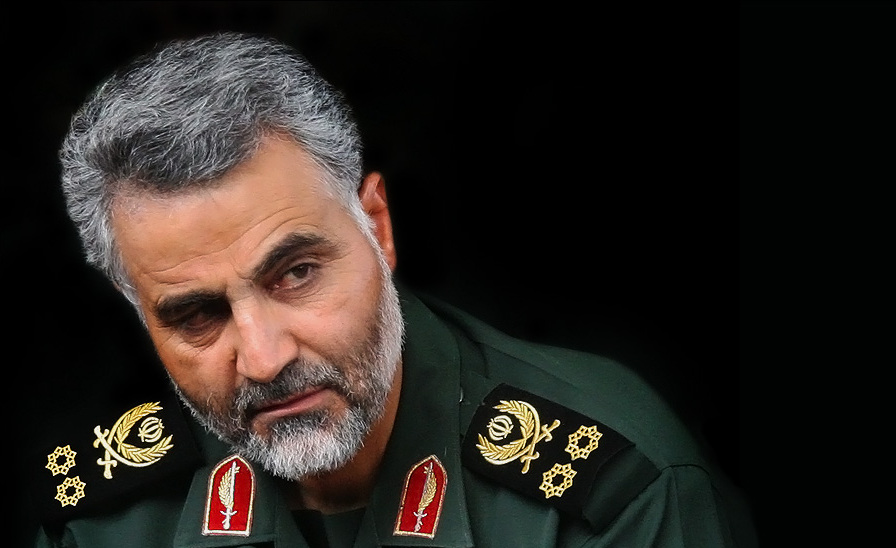The Soleimani Killing Was Impulsive
Opinion
Seyed Shahabbodin, Vajedi
Qasem Soleimani was a major general in the Iranian Armed Forces and widely considered the second most powerful person in Iran. Due to a targeted airstrike by the U.S. military, Soleimani was killed on Jan. 3.
January 24, 2020
On Jan. 3, Iran’s top general Qasem Soleimani was killed in an overnight attack authorized by President Trump. Soleimani was a key piece in Iran’s military influence and defense, widely regarded as the second most powerful figure in the government. His death was a harsh blow to the Iranian government, as evidenced by Supreme Leader Ayatollah Ali Khamenei calling for three days of mourning for Soleimani soon after the strike.
The U.S. military defends their actions by stating that they orchestrated the attack to protect U.S. personnel abroad and disrupt future Iranian attack plans. The U.S. and Iran have been engaged in a proxy conflict involving sanctions, terrorism, and military intervention for several years, resulting in high tensions. The attack on Soleimani, which was carried out without consultation or authorization from Congress, has dramatically escalated this ongoing “shadow war” between the two countries. On Jan. 8, five days after the strike, Iranian forces launched missiles at U.S. military bases in Iraq.
Prior to the attack, Trump only antagonized the government by citing the Iranian nuclear deal as “foolish” and “very defective.” The classification of the report on Soleimani’s death made under the War Powers Act, which requires the president to notify Congress after deploying armed forces, only further increases concerns of tensions between the US and Iran exploding. Both the government and the people are unaware of the scope of the national security threats caused by the attack on Solemani, as the document is currently only available to select individuals not in Congress. Iran’s demands are clear, especially after their forces fired missiles at U.S. military bases to retaliate against the killing of Soleimani: it wants all U.S. troops to leave the country to de-escalate the current conflict. Yet despite this, Trump aims to push even more sanctions on the economy and respond to Iranian aggression.
As tensions increase, there are three possibilities as to what Iran could do to retaliate against the U.S. One such retaliation is the use of proxy forces and terrorists to kill Americans and their allies in the Middle East. This process has been used before when a group linked to the Iranian-backed militia attacked the U.S. embassy in Beirut in 1983. Another possibility of retaliation involves a large-scale cyber attack, which they have somewhat already achieved with the hacking of the website for the Federal Depository Library Program a few days after Soleimani’s death. Finally, they may work to force U.S. troops out of the Middle East or potentially even kill a prominent American official.
With the growing threat possibilities, the administration should be preparing for the worst. However, the preparedness of the government does not seem high. President Trump continues to boast in his tweets about the strong military power of the U.S. There was no prior planning or strategy before the killing of Soleimani, thrusting the country into chaos.
The rash decision to attack Soleimani may have also compromised 16 years of hard work and American lives sacrificed to establish a base in Iraq, as Iran will utilize Iraq in its retaliation against the U.S., similar to the recent attack on U.S. bases in Iraq. The death of Soleimani could result in another Iraqi civil war between the forces for and against American involvement, causing millions of citizens to be targeted or displaced once again. Additionally, Iran has already backed out the nuclear deal limits set in 2015 and will resume building nuclear weapons. The strained relations between the U.S. and Iran only contribute to the grim statement that the Middle East will continue to be one of the least stable parts of the world.
Without a doubt, Iran will retaliate further for the possibly unjust killing of Soleimani. Still, Trump must ensure that he doesn’t anger the Iranian people or government even further than he already has. Previously widespread anti-regime protests in Iran have been replaced with anti-American chants. In addition, Trump’s claim that he is willing to attack cultural sites, which already goes against international laws, has alienated many pro-American Iranians.
Going further, the administration should repair relations between the two countries and ensure that a similar attack on a significant official does not occur in Iraq. Having an aggressive stance towards Iran only blocks future opportunities for diplomatic solutions. The government must formulate a plan for alleviating tensions, whether that means removing troops from the area or lifting sanctions. Without intervention, it is only a matter of time before rising tensions come to a bloody standstill.



